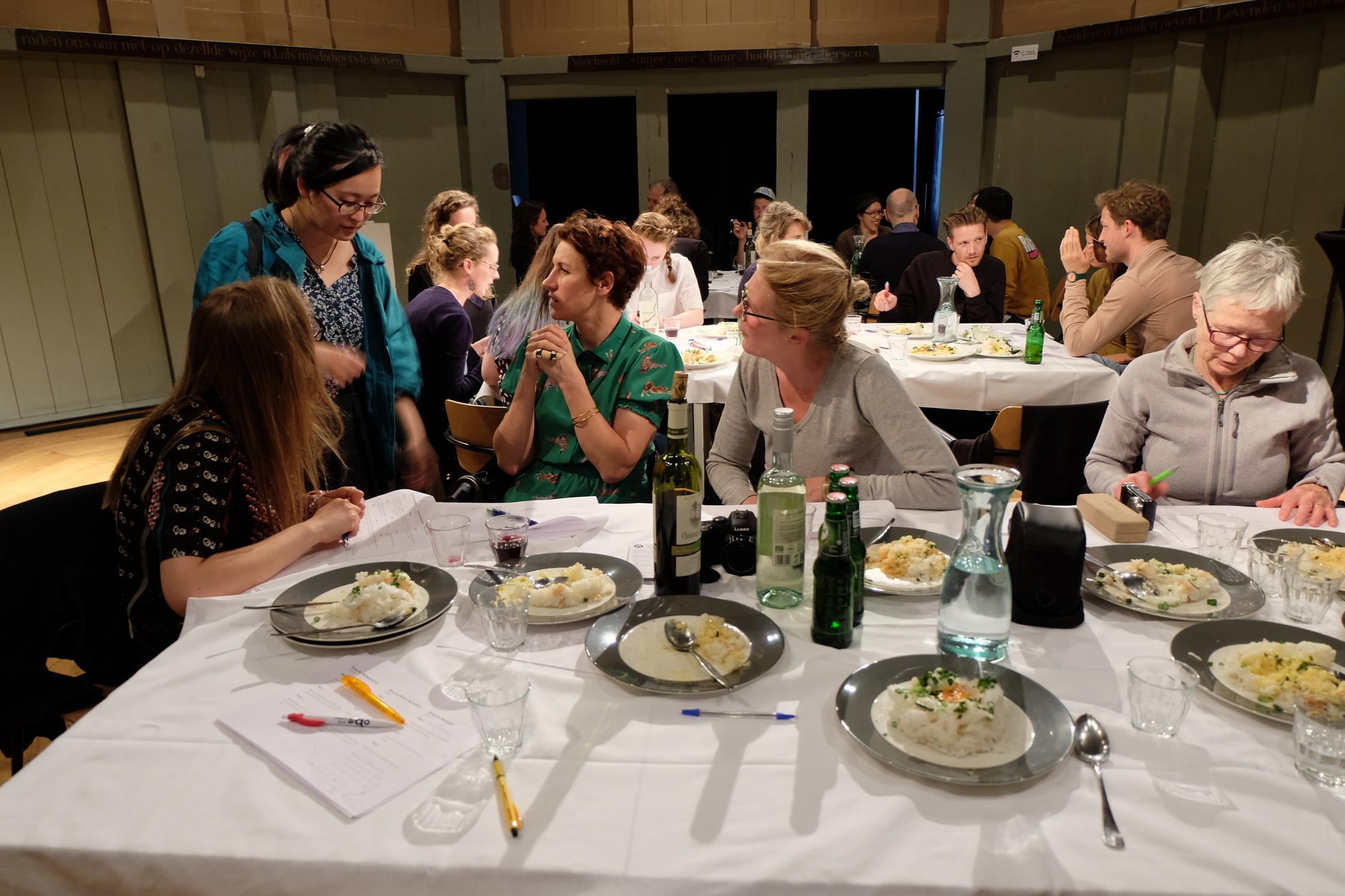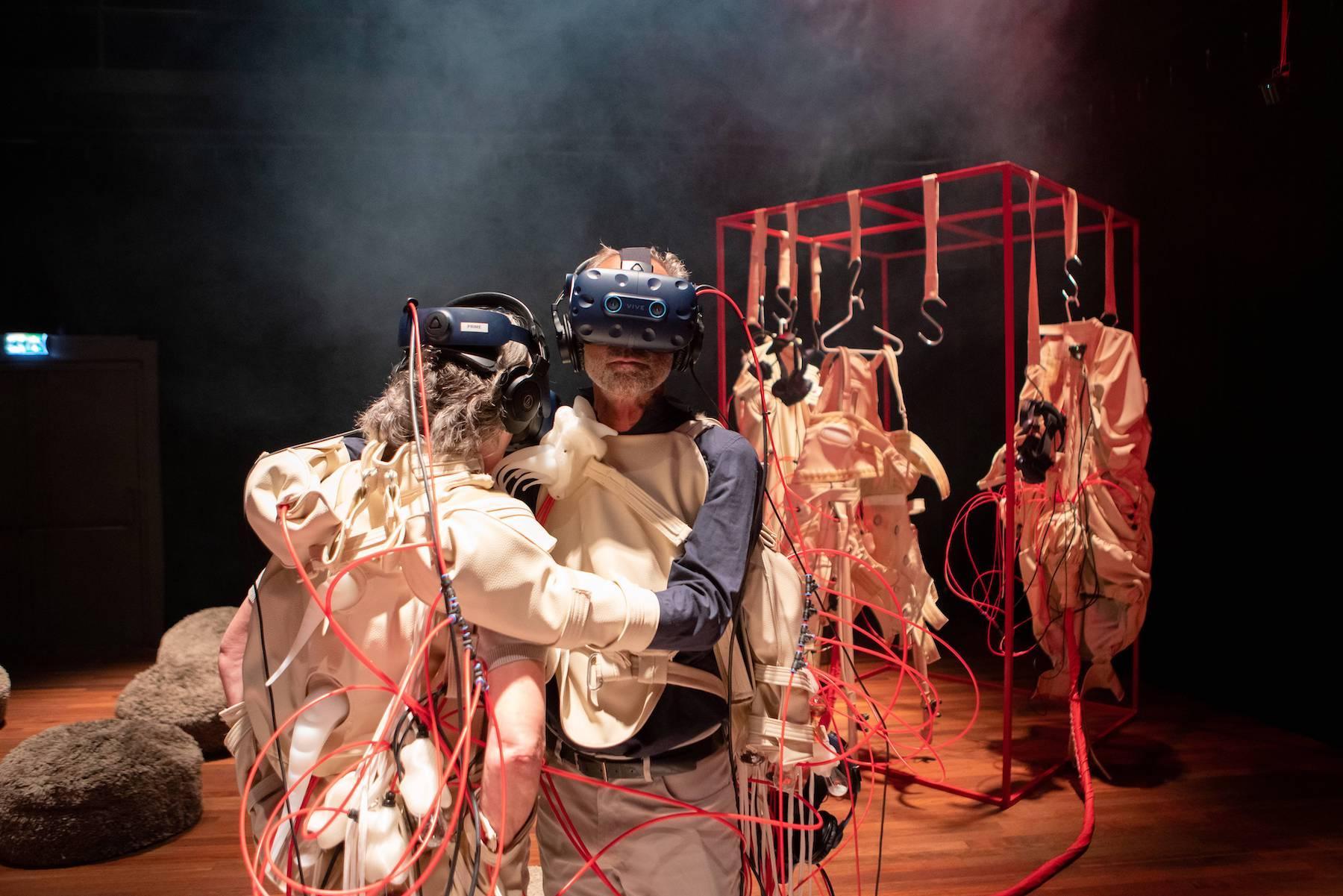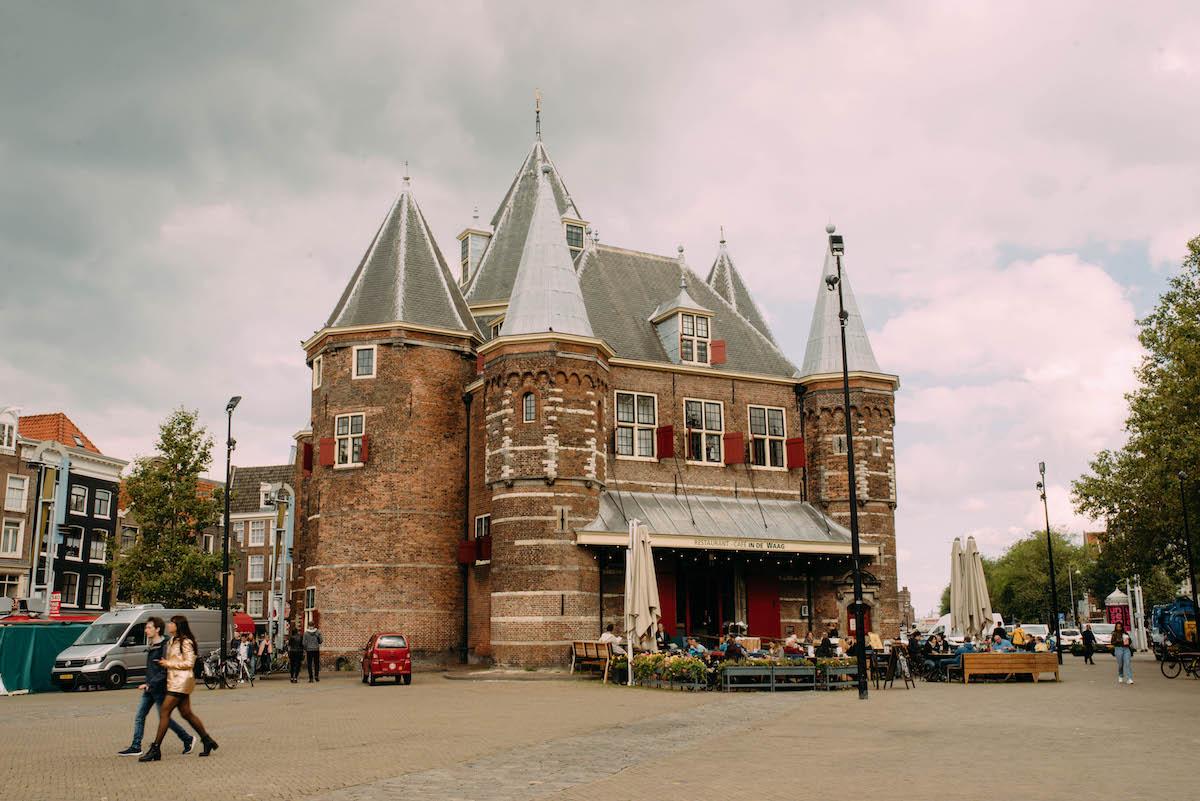It’s the year 2100. Newly developed technologies mean the relationship between humans and viruses is now stronger than ever, and the use of viruses has become ubiquitous.
This is the scene bio-artist Pei-Ying Lin sets at the start of the cooking with viruses workshop. Of course the workshop starts with a food element. She’s prepared a rice and egg dish with chili and spring onions for the workshop participants to eat. The only catch? The egg yolk is still raw. Laid on a bed of rice and surrounded by a foam made of the whipped egg whites it looks beautiful, but for many people eating a raw egg can still throw up some barriers. Hesitantly people start eating the dish while Pei continues. "Can you feel the effects on your body? Do you feel it tingle? Are you getting warm? Do you feel the muscles contracting around your stomach?"
This introduction sets the scene for sure. After people have finished their dishes, it’s time to move on to the cooking part of the workshop. To ensure safety of the participants, this cooking part remains a thought experiment. While it would indeed be very interesting to experiment with actual viruses, this can unfortunately not be done safely for now. That doesn’t spoil the fun though, as people get to work on creating their own recipes. Some information is given on the steps involved in the recipe design process, as well as a list of fictional viruses that can be used in the recipes. If anything, the thought experiment setup allows imagination to run free. This leads to the creation of some very inventive recipe ideas.
As the workshop is nearing the end, every group is asked to present their idea. Ideas range from a viral cocktail to viral fermentation processes and even a full viral dinner experience. My personal favourite? The first date soup: a recipe that starts off as a gazpacho type dish, and changes colour, texture and amount as different ingredients are added. With as a cherry on top: at the end of the night, if the date didn’t go too well, an ingredient can be added that makes the diners light as a feather so they can float away.
Who knows, right now the idea of incorporating viruses into our dishes may seem quite outlandish and even dangerous. But maybe in 2100 this really will be standard cuisine all around the world. I, for one, am excited to see what the future will bring!
About the artist
Pei-Ying Lin is a Taiwanese bio-art designer and artist and founder of Taiwanese BioArt Community. From September 2017 until August 2018 Pei-Ying Lin is artist in residence at Atelier WG and collaborating with Mediamatic, Vrije Universiteit and Waag as part of the 3Package Deal from the Amsterdam Fund for the Arts (AFK).
This project is supported by the 3Package Deal of Amsterdam Fund for the Arts (AFK).


